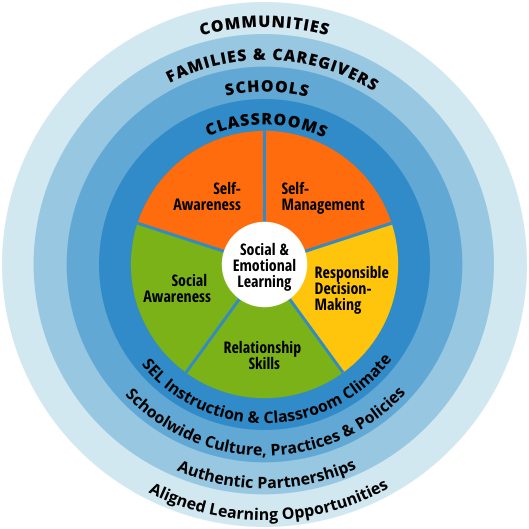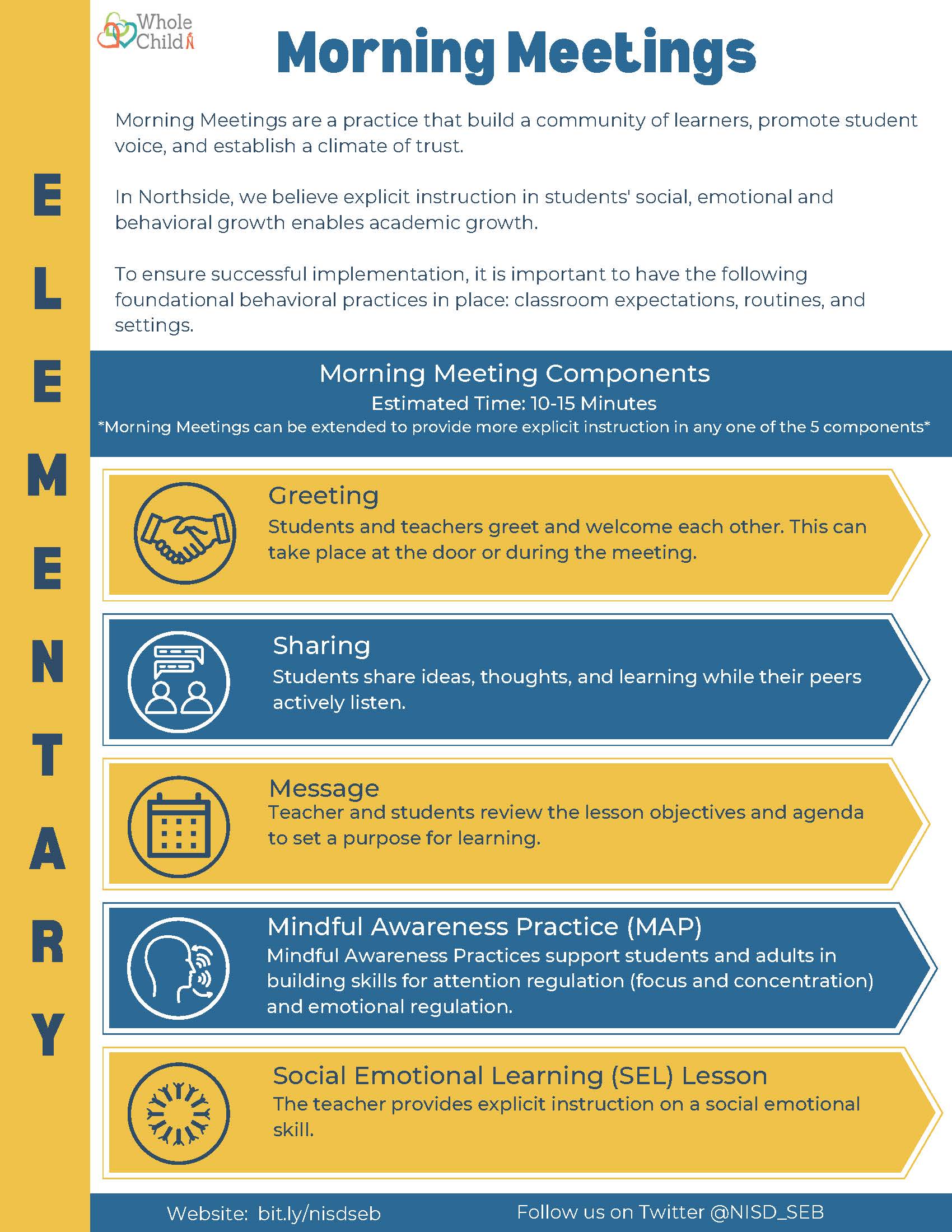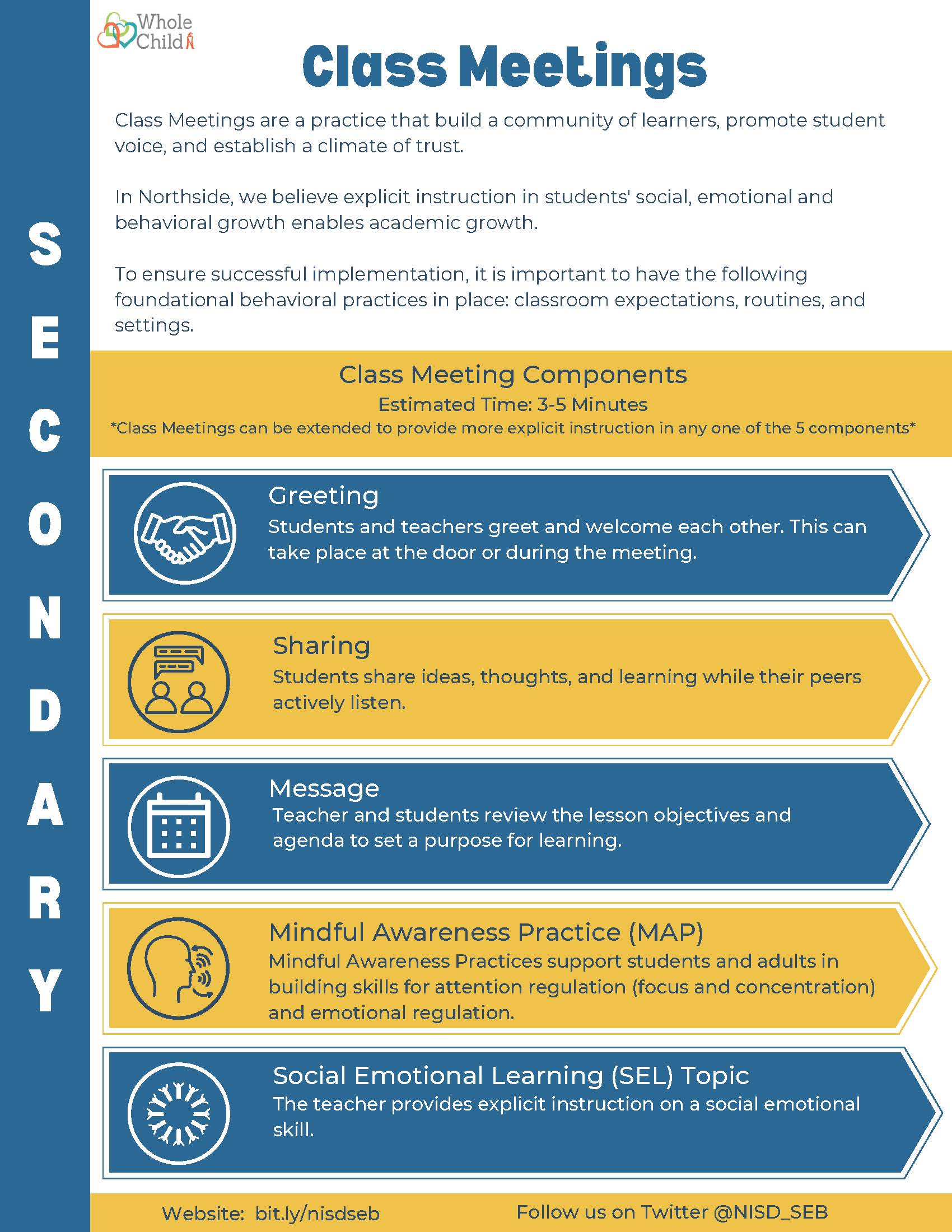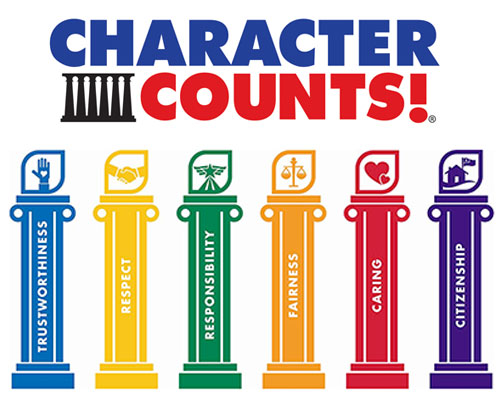The Northside Independent School District Student Leadership Program, an integral component of the Pre K-8 educational program, enables students to belong and contribute to a community and develop academic, personal, social, and career competence.
Collaborative for Academic, Social, and Emotional Learning (CASEL)
Northside implements the Collaborative for Academic Social and Emotional Learning’s (CASEL) definition of social emotional learning. We believe social emotional learning (SEL) is an integral part of education and human development.
SEL is the process through which all young people and adults acquire and apply the knowledge, skills, and attitudes to develop healthy identities, manage emotions and achieve personal and collective goals, feel and show empathy for others, establish and maintain supportive relationships, and make responsible and caring decisions. There are five core competencies: self-awareness, self-management, social awareness, relationship skills, and responsible decision-making.
SEL advances education excellence through authentic school-family-community partnerships to establish learning environments and experiences that feature trusting and collaborative relationships, rigorous and meaningful curriculum and instruction, and ongoing evaluation.
To learn more, visit CASEL.org.
Skills Supported through CASEL 5 Competencies
Self-Awareness
- Identify Emotions
- Self-Efficacy
- Interests & Purpose
- Self- Respect
- Self-Reflection
Self-Management
- Emotion Regulation
- Organization
- Stress Management
- Motivation
Social Awareness
- Perspective Taking
- Empathy & Compassion
- Gratitude
- Belonging & Trust
Relationship Skills
- Communication
- Teamwork & Collaboration
- Positive Relationships
Responsible Decision-Making
- Open-Mindedness
- Understanding Impact & Consequences
- Critical Thinking
- Curiosity
Morning and Class Meetings
Morning Meetings (Elementary) and Class Meetings (Secondary) are practices that build a community of learners, promote student voice, and establish a climate of trust.
Meeting Components
- Greeting - Students and teachers greet and welcome each other. This can take place at the door or during the meeting.
- Sharing - Students share ideas, thoughts, and learning while their peers actively listen.
- Message - Teacher and students review the lesson objectives and agenda to set a purpose for learning.
- Mindful Awareness Practice (MAP) - Mindful Awareness Practices support students and adults in building skills for attention regulation (focus and concentration) and emotional regulation.
- Social Emotional Learning (SEL) Lesson - The teacher provides explicit instruction on a social emotional skill.
What are Morning Meetings?
What are Class Meetings?
Pillars of Character
Northside’s Student Leadership Program implements the Character Counts curriculum, where they use Six Pillars of Character: trustworthiness, respect, responsibility, fairness, caring, and citizenship as a foundational strategy while using the TEAM approach and incorporating other character education best practices.
Besides promoting a focus on a positive school climate, other defining elements of CHARACTER COUNTS! are intensive decision-making strategies, mindfulness, growth mindset, and behavioral change theories. Character Counts’ practical strategies produce positive results in the academic, social, emotional, and character development domains (The Four Wheels of Success).



